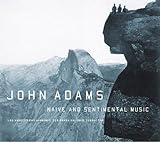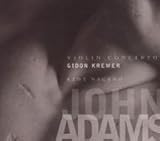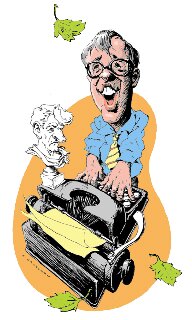ARRIVALS: My favorite Dudamel moment (so far) occurs during his 2007 performance of Bartók’s Concerto for Orchestra – the performance in Disney Hall, about two years into his romance with the L.A. Philharmonic and which you now can download via iTunes and buy for not very many bucks. The second movement of that wonderful work is a special delight, a scherzo built out of instruments in pairs exchanging wry jokes with an intervening serious interlude. It’s the music of an elderly but energetic great artist caught in an atypical warm-hearted mood. The young Gustavo had brought the orchestra into this frame of mind; the music fairly gleams with its quotient of captivating ironies. The wit content is high, but so is the tenderness, in these eight-or-so minutes of orchestral magic. Beyond all the acclaim for his daredevil orchestral command – vividly demonstrated to a sold-out, justifiably ecstatic Disney audience at his so-called inaugural last Thursday night, the word turned a little faster one night last week, to honor the occasion of Gustavo Dudamel’s arrival at the Philharmonic podium now officially his.
He confirmed that claim in the grand manner: a challenging contrast of a familiar large-scale work and another work of similar scale, not yet known but equipped with convenient handles: a living (respectably) and well-known composer, with a scenario set on familiar nearby streets. Gustav Mahler and John Adams are not everyone’s inevitable choice as program-mates, yet the pairing carried its own message: our orchestra, even in these harassing times, is still dedicated to the responsive listeners’ collective intelligence as well as their tapping toes. Add to this welcome news the tidings that the new leadership has convincingly demonstrated – on this joyous occasion last week, and on the many of similar promise in the past several years – its capability to maintain, and to strengthen, the promises held forward in the previous weeks.
We have a marvelous orchestra on our hands, a phenomenal talent on its podium, an audience that, so far at least, simply radiates satisfaction and good will, a quality unique these days in the large concert halls of the world. It is a lovely gesture, and and a not insignificant one, that Gustavo prefers to take his bows in close communion with the orchestra members. “We’re in this together†he seems to say, and there is no better way to shape a great symphony orchestra. Nothing made this any more clear than the concert’s opening: no fanfares, no anthems, no feasting until ‘way later, and a substantial new score by John Adams that, if anything, marks a kind of arrival for the composer as well.
 City Noir taps into Adams’s long-time adoration for California, a passion we Harvard-bred New Englanders are uniquely qualified to share. His California this time is the land of Raymond Chandler detectives played by Bogart, on dark streets made frantic by Barbara Stanwyck sirens. Its colors are slashing reds and purples of a cluster of tenor saxophones, with the doleful bleat of a trumpet solo to beg for our sympathy. This is not, then, the Adams of political or atomic science as a spectator sport, but rather as a master of the symphonic structure: Naïve.
City Noir taps into Adams’s long-time adoration for California, a passion we Harvard-bred New Englanders are uniquely qualified to share. His California this time is the land of Raymond Chandler detectives played by Bogart, on dark streets made frantic by Barbara Stanwyck sirens. Its colors are slashing reds and purples of a cluster of tenor saxophones, with the doleful bleat of a trumpet solo to beg for our sympathy. This is not, then, the Adams of political or atomic science as a spectator sport, but rather as a master of the symphonic structure: Naïve.
 Naïve and Sentimental Music, the Violin Concerto and now this. Those enamored by Adams’s stature as the harbinger of “the new accessibility†may be put off now and then by the direct onslaught of a few pages of City Noir; it is a good, deep, tough work, the arrival into unfamiliar territory by its composer, a step ahead for all of us.
Naïve and Sentimental Music, the Violin Concerto and now this. Those enamored by Adams’s stature as the harbinger of “the new accessibility†may be put off now and then by the direct onslaught of a few pages of City Noir; it is a good, deep, tough work, the arrival into unfamiliar territory by its composer, a step ahead for all of us.
 Came the Mahler First, and the music for another kind of landscape: vast. serene and sunlit, then triumphantly aflame. Perhaps there were no real no surprises in Dudamel’s unfolding of Mahler, this garrulous, eager music, unless you count the remarkable rapport that rendered inconsequential any presumed clash of national spirits – Latino v. Wiener in this case. (And also, perhaps. it’s high time to drop that presumption and accept the splendid compatibility, already clearly apparent, between this omnivorous new guy in town and the musical world around him? His radiant Mahler performances hang fiercely aglow in favoring air.. The First Symphony’sdelicious wit, the irresistible bombast, the hundred-percent-pure brass of the ending – these combined for that enchanted evening of our fervent prayers. Yes, it actually happened. Now comes the hard work — for the abundantly able musical forces here at hand as their accomplishments light up our landscape.
Came the Mahler First, and the music for another kind of landscape: vast. serene and sunlit, then triumphantly aflame. Perhaps there were no real no surprises in Dudamel’s unfolding of Mahler, this garrulous, eager music, unless you count the remarkable rapport that rendered inconsequential any presumed clash of national spirits – Latino v. Wiener in this case. (And also, perhaps. it’s high time to drop that presumption and accept the splendid compatibility, already clearly apparent, between this omnivorous new guy in town and the musical world around him? His radiant Mahler performances hang fiercely aglow in favoring air.. The First Symphony’sdelicious wit, the irresistible bombast, the hundred-percent-pure brass of the ending – these combined for that enchanted evening of our fervent prayers. Yes, it actually happened. Now comes the hard work — for the abundantly able musical forces here at hand as their accomplishments light up our landscape.
MY WEEKLY HORROR STORY: Word is in, from exotic Detroit, anent some interesting policy changes at that city’s local Symphony. Seems as how conductor Leonard Slatkin plans a certain amount of rampage. Next season the Beethoven Fifth will be played minus the first five bars (the generative source for the entire symphony, remember?) “Everyone knows how they go,†explains a DSO rep. Another famous opener, the bassoon solo that initiates The Rite of Spring will be replaced by a solo tuba “Bassoonists get plenty of solos. Why not let someone else have at it?†says Detroit’s conductor, our old friend Slatkin. The orchestra will be seated with their backs to the audience. “I feel that listeners are distracted by seeing the faces of the musicians,†says Slatkin. Rachmaninoff’s Second Symphony, which normally meanders through the orchestra for around 70 minutes, will now clock in at twelve. Slatkin: “The piece is long and repetitive. Once you have heard the main themes they are so memorable that they don’t have to be played again.†Mr. Slatkin also spoke recently about producing a Bruckner cycle: the nine symphonies – which normally run over an hour each – plus the two unpublished ones, “ It is my hope,†he said, “to get through all of them in one concert.â€
 Maestro Slatkin, may I remind you, is the son of two great Los Angeles musicians, Felix Slatkin and Eleanor Aller, whose Hollywood String Quartet once performed and recorded great, honorable – and uncut – performances. Their CD of Schubert’s C-major Quintet is what I play for friends to demonstrate honest musicianship. Go figure.
Maestro Slatkin, may I remind you, is the son of two great Los Angeles musicians, Felix Slatkin and Eleanor Aller, whose Hollywood String Quartet once performed and recorded great, honorable – and uncut – performances. Their CD of Schubert’s C-major Quintet is what I play for friends to demonstrate honest musicianship. Go figure.
FOR THOSE WHO CAN’T GET ENOUGH OF ME (Hi, Mom!): Check out www.bluefat.com. Bluefat is John Payne’s arts Website for which I’m doing some music crit. John was my first editor at LA Weekly, and a strong critical voice in areas I cannot pretend to understand. His new site is attractive, and the ediditing is dpot-on.



Regarding Leonard Slatkin’s “innovations” in Detroit:
you do realize i hope that this whole thing is a joke, don’t you?
If one reads the entire article that can be found at , it becomes obvious.
It’s quite funny actually.
The link for the blog post i mentioned above is: leonardslatkin.com/news092309.shtml.
Fortunately, those of us in the New York City Metropolitan area were able to hear the premier concert with the John Adams “City Noir” and the Mahler first symphony via NPR/music.
But, then, WNET Public Television gave us the concert on a “Great Performances” program. I recorded the concert. I will cut a DVD. Then, I will rip the DVD to .mp4 so that I can put the concert video on my computer and then on my Zune. That way, I can watch and listen flying out to your great city to see my daughter and her family.
I really loved the John Adams piece.
I have just gotten the Mahler Symphonies, with Rafael Kubelick and the Bavarian Radio Symphony Orchestra. Mahler is totally new for me. I am playing the cycle on my Zune on my exercise walks.
I have a running commentary on my weblog, “Whither Public Radio and serious music” at http://richardmitnick.wordpress.com.
The first three symphonies were just to blaring and brassy for me. I am sure that it is to my discredit. But the fourth!! I said, “…viva viva Mahler…’ all light and lyric, what a relief. I suppose I am showing my ignorance.
Thanks for your article on “The Dude” and the first concert.
>>RSM
As jokes go, this is pretty lame. Sounds more like some serious arts promotion nowadays. My “HORROR STORY” STANDS
Lucky daughter & family. Can you copy DVDs? My ATWATER KENT can’t.
Obviously, Alan, one cannot argue about sense of humor. If it’s not funny to you, then there is nothing one can do about it.
To me, Maestro Slatkin’s “innovations” were very funny, precisely because they are based on some very real and highly questionable current trends in symphonic marketing and presentations – hyperbolically exaggerated, of course, in the classic style of good American satire. This is the stuff of which the most poignant (and therefore, i think, the best) kind of humor is made – genuine laughter through tears.
An additional level of enjoyment for me possibly comes from the fact that i have known Maestro Slatkin personally, but mostly professionally, for three decades now – and this kind of levity seems, on the surface, to be completely contrary to his meticulous nature and very proper style of behavior. But he does have a good sense of humor and knows how to tell entertaining stories quite well. As is evident in this amusing article.
Alan,
Sorry, I just now saw your question.
Yes, I can copy DVD’s. I can also take the DVD and “rip” the data to a computer format, .mp4, so that I can keep it on my computer.
I can also take .mp4 downloads of music videos and convert them to DVD format to watch on the big screen TV.
If you want to know what I use for all of this, just send me an email note.
>>RSM
Alan,
Important to note on the subject of the DVD’s, first, if you have any kind of VCR, DVD recorder, whatever, you can capture “Great Performances” programs like the Dudamel premier, “American Masters”, etc. PBS wants to charge upwards of US$24.99 for these programs. You can put them on VCR tape or, like me, record them on a DVR (or Tivo) and then get them onto a DVD blank which costs me US$0.22ea.
I have recorded the biographical “Leonard Bernstein – Reaching for the Note”; Philip Glass – Philip in Twelve Parts”; Five films on Andy Warhol; The Bernstein Freedom Concert in Berlin when the wall came down; “Buena Vista Social Club” about music, or the lack of it, in Cuba, this film the work of Ry Cooder; “Calle 54” an award willing movie by Ferdinand Treuba about Latin Jazz; George Harrison’s “Concert for Bangladesh”; Eric Clapton’s “Concert for George (Harrison); Eric Clapton & Steve Winwood at Madison Square Garden in 2008;The Sidney Pollack documentary “Sketches of Frank Gehry” about Frank Gehry; The Great Performances piece “Karajan – Or Beauty as I See It” about you know who; a short film, “The Sound of Miles Davis”, old scratchy, but as Miles played, “So What”; The very short film put together by Olivia Harrison about the Traveling Wilburys; Nelson Eddy and Jeanette MacDonald in “Maytime”, “Roy Orbison – A Black and White Night”; two Sarah Brightman concerts, The whole of the Ken Burns’ “Jazz”; Philip Glass’ “Qatsi trilogy”.
Now, you are I am sure not interested in even half of what I have recorded. But, think of the money PBS wants for these and I put them on a US$0.22 piece of plastic which will last my lifetime.
So, if, you have some kind of recorder, watch what is coming up on KCET and KLCS, KOCE, KVCR, whatever you get, and capture it.
>>RSM